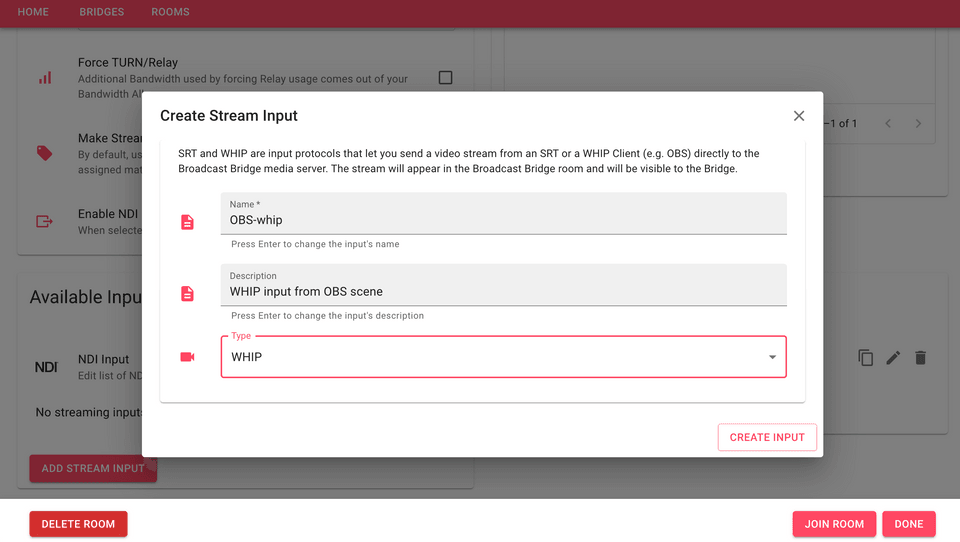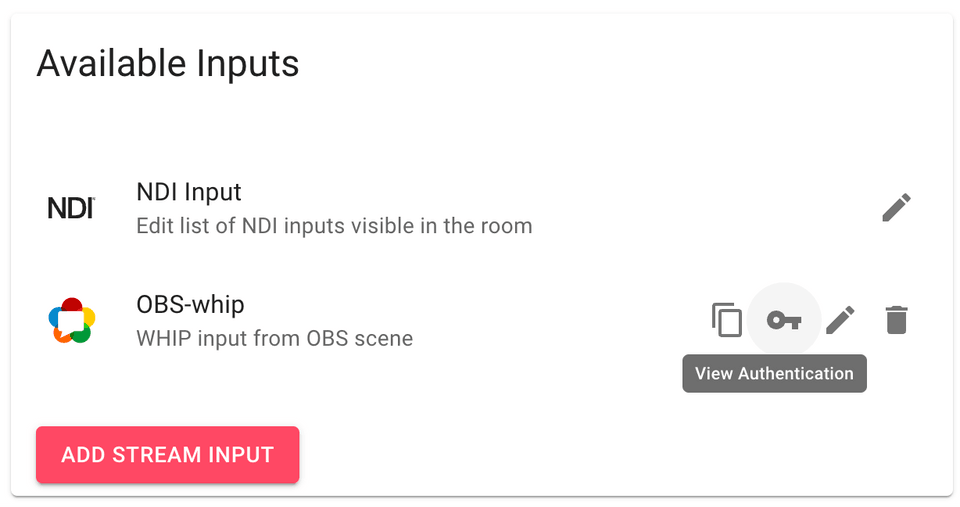Broadcast Bridge New Features: WHIP
— remote speakers, remote presenters, hybrid event, virtual event, remote broadcast, livestream, Zoom, Teams, Broadcast Bridge, Everycast Labs, WHIP, ingress protocol, OBS, vMix, vision mixer, SDI, feature highlights, streaming, WebRTC, Talon desktop encoder — 3 min read

Next up in the series of new features in Broadcast Bridge, we have WHIP.
What is WHIP?
WHIP (WebRTC HTTP Ingress Protocol) offers a standardised signalling protocol for ingesting WebRTC streams. By offering a standardised signalling protocol, WHIP enables you to send audio and video feeds from supported hardware and software directly into a cloud media server like the one in Broadcast Bridge.
You may have seen more and more specialised AV hardware offering WHIP streaming, with the Talon desktop encoders being one example.
Software solutions like OBS now offer WHIP capabilities too, allowing you to stream your OBS scene directly to the media server with just a URL and a token.
With WHIP being one of the shiny new things in the WebRTC world, there has been a lot of talk around it at several conferences in the field. If you’d like to find out more about WHIP and WebRTC then here’s some great sessions to check out:
-
Our own Dan Jenkins has given some talks about it at London Video Tech meetup and FOSDEM this year.
-
Our friend Lorenzo Miniero, the main author of Janus, gave an awesome talk on it at CommCon 2021.
-
You might also want to check out this blog about WHIP from Dolby.io. Dolby has one of the most active teams behind the protocol.
So what can I do with it?
Broadcast Bridge is one of the few services to offer WHIP ingestion in our cloud media server.
What does this mean in practice?
If you’re shooting with a specialised setup on-site, or you’re outside your network or studio where the AV mixer is, but you still need the video to be live-edited together with the other feeds (cameras in the studio and/or remote participant), WHIP allows you to stream the live video directly from your encoder and straight into our server.
With WHIP, your video gets input directly into Broadcast Bridge and is in sync with all other remote feeds. As with all the input types, the Bridge desktop app running locally in your studio makes the remote feeds available in your local network via NDI and SDI.
How do I use it?
In the Broadcast Bridge web app, navigate to the settings of the room where you want to input your feed, and scroll down to Available Inputs. Here, select WHIP as your stream input type, and give it a name and a description:

Broadcast Bridge Room settings: creating a new stream input.
Once created, you can view the new input’s authentication detail and copy its URL endpoint: You’ll need both of these to stream your feed into the Broadcast Bridge media server.

View the URL endpoint and the authentication details in the Room settings.
And that’s WHIP, in a nutshell. If you have burning questions or need support, drop us a line: [email protected]
Did you know we offer a 7-day free trial of Broadcast Bridge? No card required so you can have a play without being locked in.
- Marco, Ellie and the Everycast Labs team